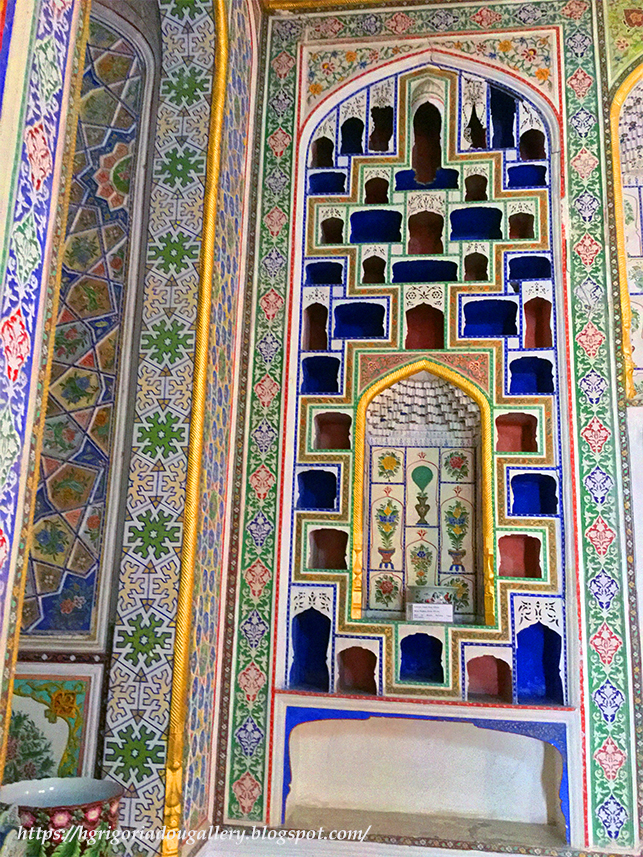For some reason, tourists are less interested in the suburban palace of the Bukhara emirs with poetic name Sitorai Mohi-Hosa (a palace Between the Stars and the Moon). Although the palace was built comparatively recently (less than a hundred years ago), and its architecture was influenced by European traditions, it is there that one can see an interior typical of Bukhara palaces and get an idea of everyday life of the Emir`s court.
The palace Sitorai Mohi-Hosa is currently situated within the city limits and is surrounded by sanatoria and residential buildings. Surprisingly enough, it has a peculiar microclimate of its own. Built in 1911 for the last emir, Alim Khan, the three-building compound incorporates elements of both Russian and traditional Bukharan architecture.
It was under construction for two decades, beginning from the end of the 19th century. Firstly, the group of local architects headed by Usto Hodja Hafiz had built a magnificent object which combined local Bukhara and European traditions. The main structure of this palace is granted to the throne hall. Under its arks the public meetings of the elite authorities used to be held.
The main building of the palace which includes several rooms and personal premises of emir had been constructed mainly under the supervision of Russian engineers and only "The White Hall" and its corridor built in 1912-1914, belong to the art style of Bukhara architects. These halls are the masterpieces of ornamental decoration.

"The White Hall" had received its name from the shiny-white construction materials used during the creation) process to cover the walls and the ceiling. The mirrors built in the wall in the shape of a panel constitute only the font for the decorative ornaments. After destroying the palace in 1920 as it was decided by Bukhara emirate, Sitorai Mohi-Hosa was the session place for the new government, supreme state body of the National Republic of Bukhara (1920-1924), the united national assembly.

The inner courtyard was the location for the First Congress of the Bukharan Soviet in 1920 and now houses the slightly dusty Museum of Applied Arts, replete with the contents of the emir's bed chamber. Far more interesting, however, are the rooms that surround the courtyard: the emir's bedroom, games room, the mirrored White Hall, and a banqueting hall. There are two other museums in the complex, the Museum of Costume and the Museum of Needlework, both of which are worth of your time.














